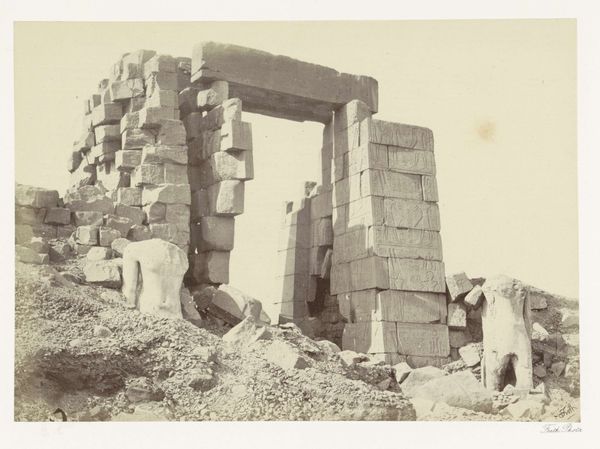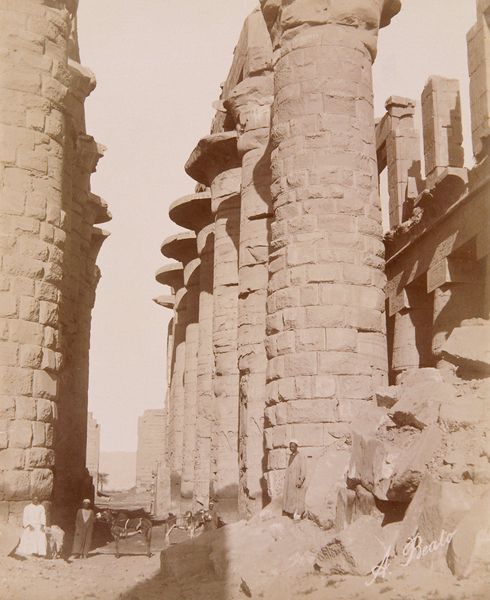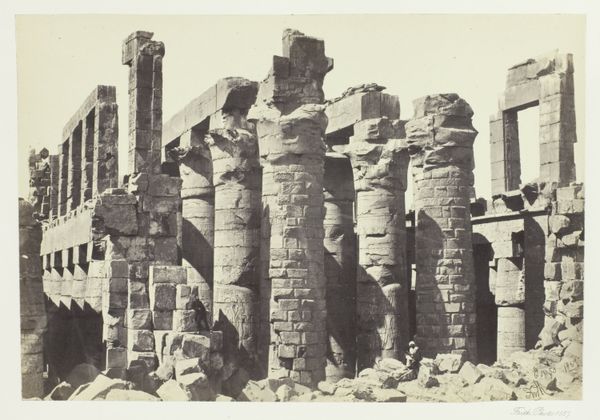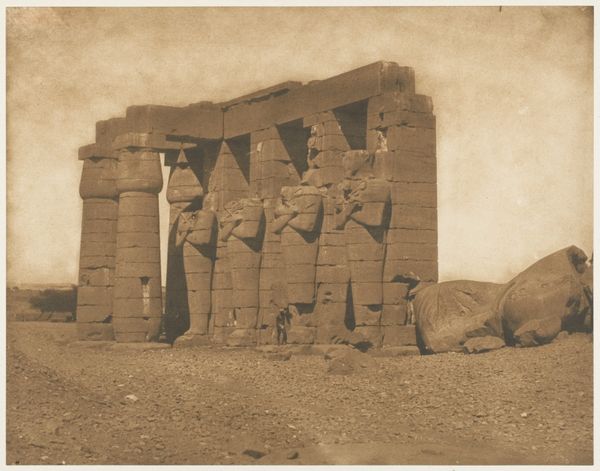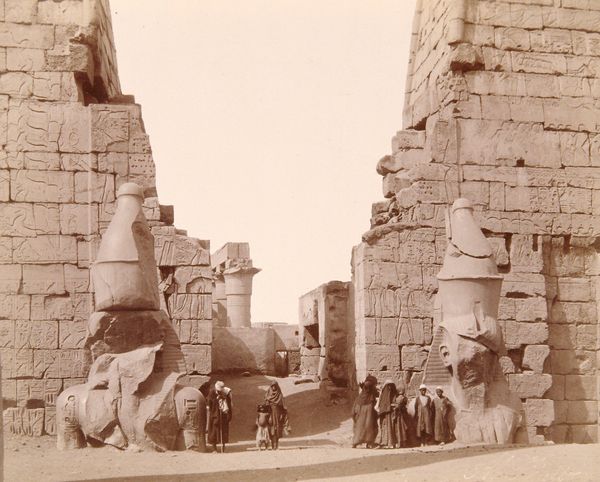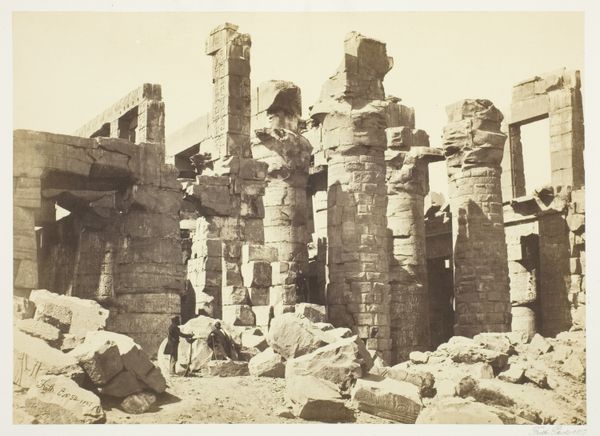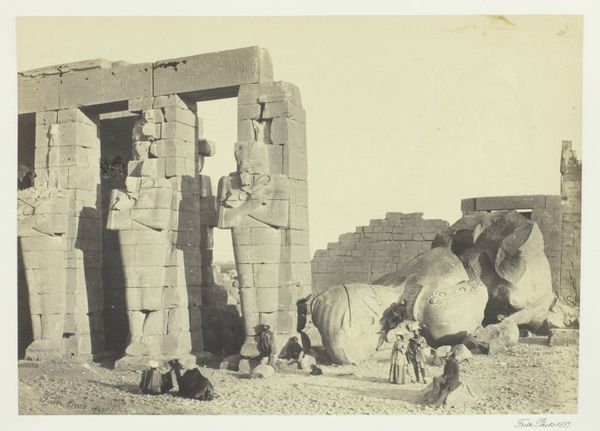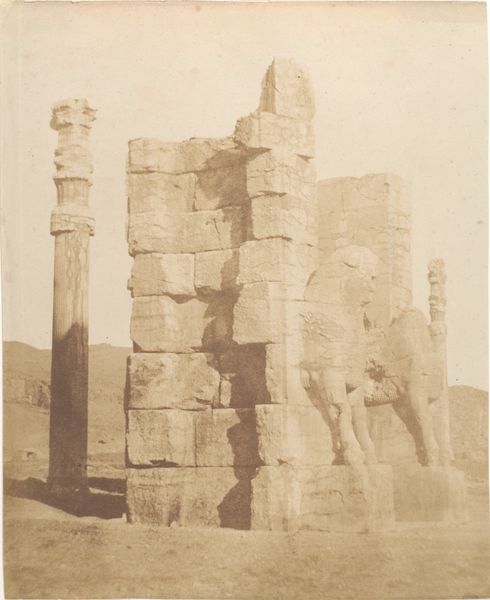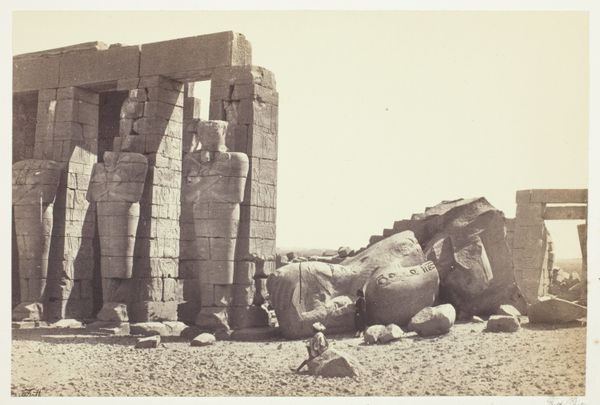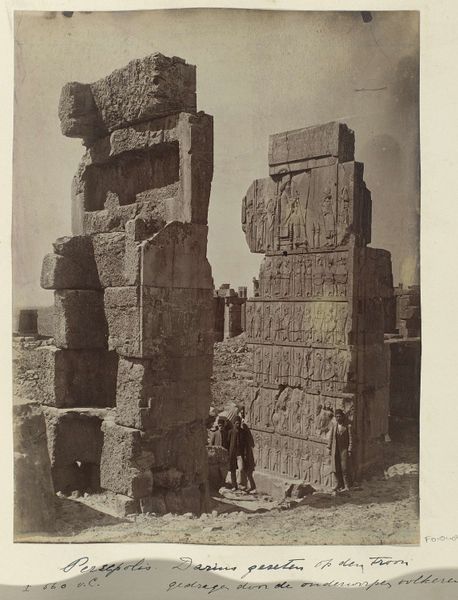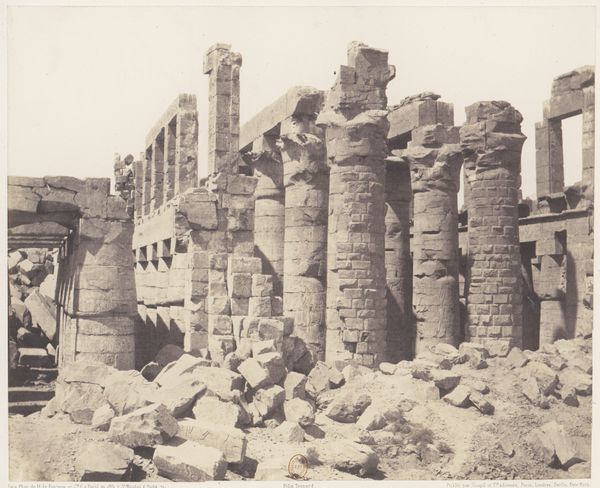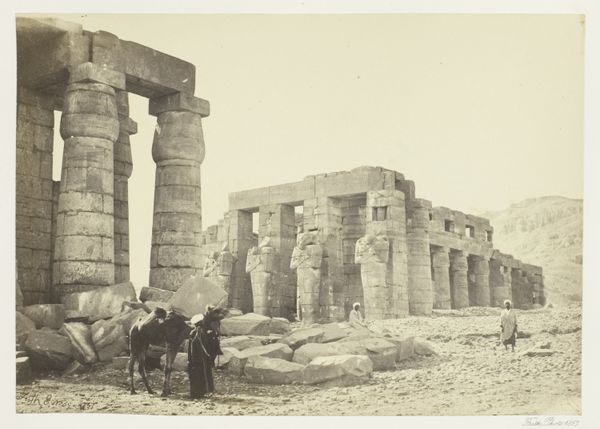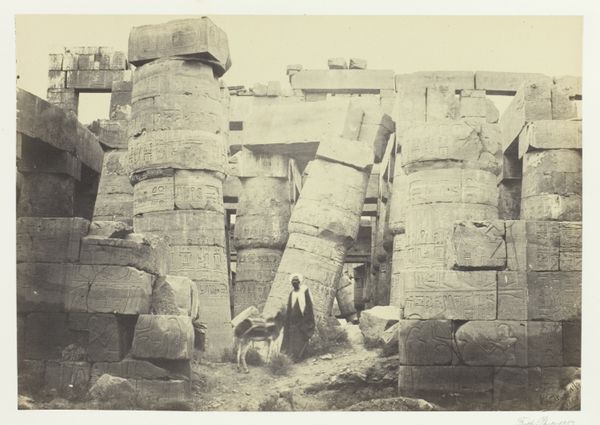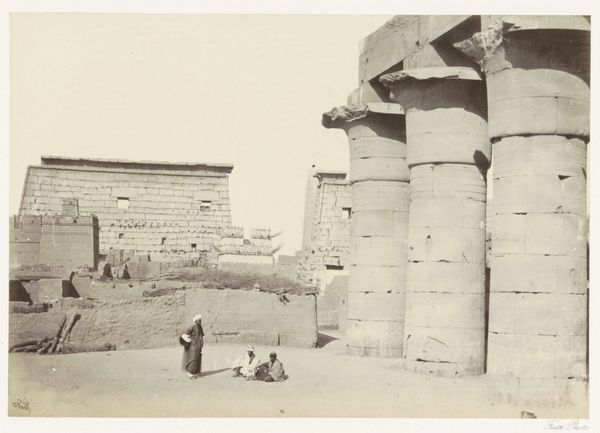
albumen-print, photography, albumen-print, architecture
#
albumen-print
#
portrait
#
landscape
#
ancient-egyptian-art
#
photography
#
ancient-mediterranean
#
albumen-print
#
architecture
#
realism
Dimensions: 10 3/16 x 8 3/16 in. (25.88 x 20.8 cm) (image)14 x 11 in. (35.56 x 27.94 cm) (mount)
Copyright: Public Domain
Editor: So this albumen print from around the 19th century by Antonio Beato captures granite pillars built by Tuthmosis III. It's amazing how the photograph really highlights the texture of the stone and the sheer size of these ruins. What do you make of it? Curator: It speaks volumes about the material realities of power and labor in ancient Egypt, doesn't it? Consider the immense human effort required to quarry, transport, and erect these granite pillars. This photograph documents not just architectural prowess, but also a system of resource extraction and labor organization. How does that materiality impact your understanding of the scene? Editor: I guess I hadn't thought about it that way. Seeing it in a picture, almost like a historical document, shifts the focus from just the artistry to the actual work that went into it. Curator: Exactly. Beato’s photograph also captures the decay and repurposing of ancient sites. The very act of photographing, of turning the monuments into commodities for consumption by Western audiences, is part of the ongoing history of these materials. What tensions do you observe between the ancient and the modern? Editor: Well, there's definitely a tension between documenting the site and, in a way, possessing it through the image. Plus, these ruins aren’t just art objects, but the result of labor. Curator: And consumption! Notice, too, how the workers near the monument in the photograph also show up in it. In what ways can those figures be useful as contextualizing elements? Editor: By the inclusion of them, we can start to investigate ideas of appropriation. It has really shown me the economic underpinnings of art. I am thankful for the added context. Curator: Precisely! Recognizing how those elements relate is why context helps one better understand art, as well as art making practices.
Comments
No comments
Be the first to comment and join the conversation on the ultimate creative platform.
